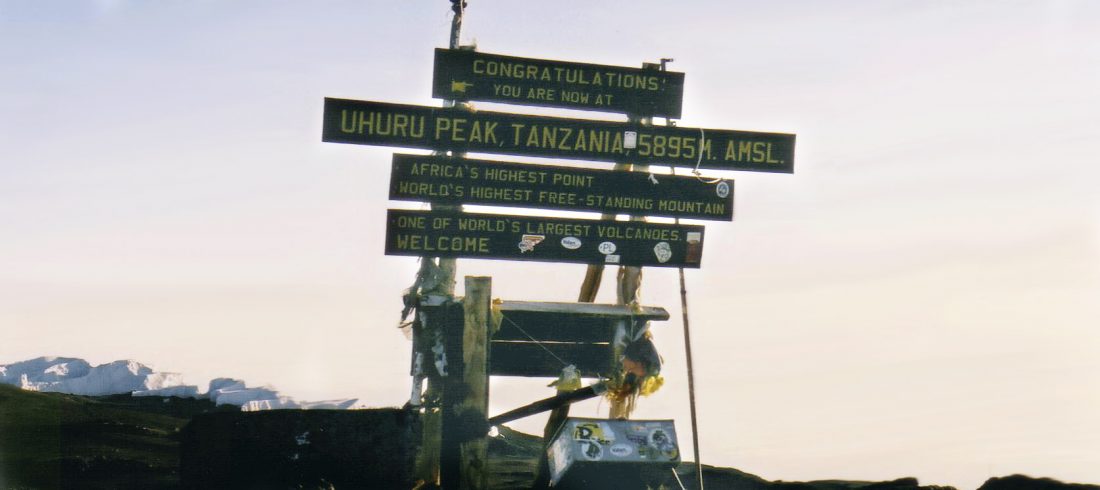
Kilimanjaro – for some a dream, others a mystery. For us all the “Roof of Africa” and for the most adventurous of us – a challenge to be conquered!
Kilimanjaro National Park is known in the world as a target for hikers and climbers.
But you can and will even enjoy the slopes of this magical giant by visiting its nature, maybe meeting some of the wildlife on its slopes, by going trout fishing or by visiting the Chala Crater Lake at the south eastern slopes.
The name Kilimanjaro is a mystery that might mean Mountain of Light, Mountain of Greatness or Mountain of Caravans. Or it might not.
The local people, the Wachagga (Wiki), don’t even have a name for the whole massif, only Kipoo (now known as Kibo) for the familiar snowy peak that stands imperious, overseer of the continent, and the summit of Africa.
Contrary to popular myth, and as romantic as the tale must sound, Kilimanjaro is not in Tanzania because of the Victorian foibles of a British Queen and her desire to please her German grandson with a present on his birthday.
Kilimanjaro is in Tanzania today, where it has been since 1896 when the Berlin conference partitioned the continent of Africa among the European powers, because of the complex history of events which preceded the scramble for Africa.
When you see Kilimanjaro, you understand why it has its popularity. Mount Kilimanjaro is the continents highest peak, and one of Africa’s most magnificent sighs.
The highest freestanding mountain in the world, rising from cultivated farmlands through lush rainforest to alpine meadows, and at last in between lunar landscape up to the twin summits of Kibo (5.895 m) and Mawenzi (5.149 m) peaks.
The lower forests are home to many animals, including buffaloes, leopards and monkeys, and higher up, occasionally the mountain Eland, but these are all rarely sighted.
But there is so much more to Kili than her summit. The ascent of the slopes is a virtual climatic world tour, from the tropics to the Arctic.
Even before you cross the national park boundary (at the 2,700m contour), the cultivated foot slopes give way to lush mountain forest, inhabited by elusive elephant, leopard, buffalo, the endangered Abbot’s duiker, and other small antelope and primates. Higher lies the moorland zone, where a cover of giant heather is studded with otherworldly giant lobelias.
Above 4,000m, a surreal alpine desert supports little life other than a few hardy mosses and lichen. Then, finally, the last vestigial vegetation gives way to a winter wonderland of ice and snow – and the magnificent beauty of the roof of the continent.
Location:
Northern Tanzania, near the town of Moshi.
How to get there:
128 km (80 miles) from Arusha. About one hour’s drive from Kilimanjaro airport.
What to do:
Six usual trekking routes to the summit and other more-demanding mountaineering routes. Day or overnight hikes on the Shira plateau. Nature trails on the lower reaches. Fishing for Trout. Visit the beautiful Chala Crater Lake on the mountain’s south eastern slopes.
When to go:
Clearest and warmest conditions from December to February, but also dry (and colder) from July to September.
Accommodation:
The other routes to reach the summit of Mt Kilimanjaro accommodations are by using tents. Several hotels and campsites outside the park in the village of Marangu and town of Moshi.